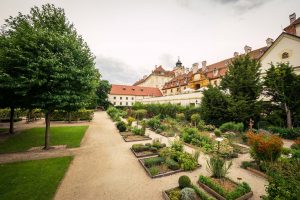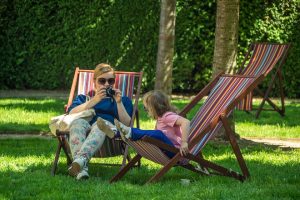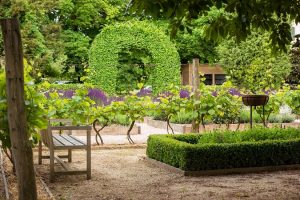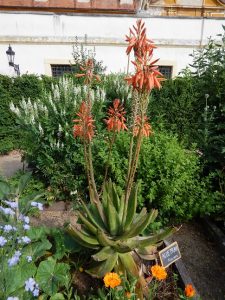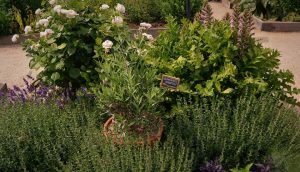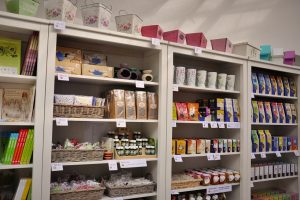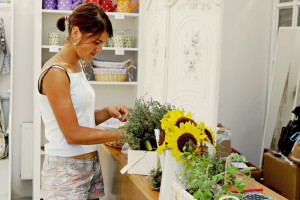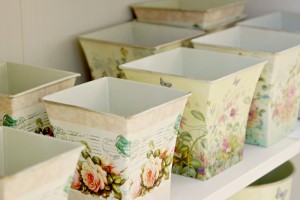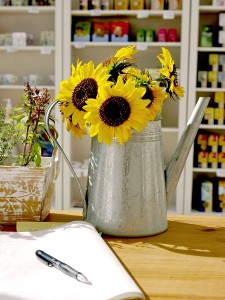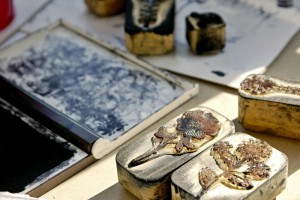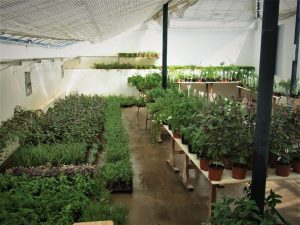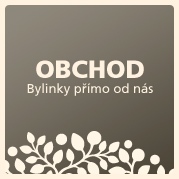Our Garden
Find Inspiration and Relaxation
The Lu & Tiree Chmelar Herb Garden represents over 300 species of herbs. Following the 17th Century tradition of monastery gardens, the herbs are organized into eight theme gardens stretching along the chateau’s terrace. Each garden has an information panel in Czech and English. Benches in the garden are provided to rest and enjoy the fragrances of the herbs and other blossoming plants.
Several ornamental patches in the center of the garden may serve as an inspiration for improving your garden.
The cherry orchard provides a shaded area to relax on picnic blankets or lounge chairs that can be borrowed in the gift shop. Garden games are also available.
Theme Gardens
Our eight themes follow the tradition of monastery gardens and represent various uses of the herbs: medicinal herbs, fragrance herbs, culinary herbs, herbs of myths and legends, herbs that attract butterflies and bees, antique herbs, dye herbs, and aphrodisiac herbs.
Since time immemorial, plants have been used to heal both people and animals. Herbs play an important role in natural healing, in phytotherapy, and alternative medicine. Here, you find herbs that heal various body parts and illnesses. :
Skin and wound healing (aloe, comfrey, plantain, st. john’s wort, pot marigold, chamomile, oats, evening primrose, castor oil plant, common thyme).
Nerves, sleep, sedatives (melissa, valerian, oats, oregano, thyme, hops, water hyssop, five leaf ginseng, rosemary, lemon verbena, lemon grass, mint).
Muscles and bones (meadowsweet, verbena, evening primrose, comfrey, valerian, thyme, common thyme, restharrow, rosemary, lavender, coriander, five-leaf ginseng, water hyssop).
Digestive system, liver, gallbladder (chamomile, melissa, fennel, oregano, liquorice, rhubarb, mint, thyme, common thyme, pot marigold, milk thistle, wormwood, sage, st. john’s wort, coriander, sweet basil, lovage, lemon verbena, lemon grass, savory, dill, marjoram, five leaf ginseng).
Kidneys, bladder, potency (goldenrod, cranberry, meadowsweet, willowherb, pumpkin, restharrow, purple loosestrife, nasturtium, hyssop, parsley, gynura).
Lungs and respiration (thyme, mint, sage, melissa, blue bugle, chamomile, hyssop, oregano, echinacea, mullein, comfrey, garlic, Aztec sweet herb).
Heart and blood circulation (foxglove, melissa, poppy, five-leaf ginseng, lemon grass, lemon verbena, gynura, bugle).
- GARDEN OF FRAGRANCES
Aromatic plants containing essential and ethereal oils, used in aromatherapy (giant hyssop, lily of the valley, sweet william, dwarf everlast, damask violet, Roman chamomile, lavender, melissa, catnip, sweet-basil, geranium, rose, rosemary, rue, sage, santolina, soapwort, common thyme, thyme, evening primrose, calamint, hyssop, bee balm).
- KITCHEN GARDEN
Plants used for cooking, both as fresh or dried (chives, dill, garden angelica, cilantro, celery, wormwood, tarragon, asparagus, garden orache, borage, pot marigold).
- GARDEN OF MYTHS AND LEGENDS
Plants as symbols connected with myths and legends of the human civilization. The plants grown here can be found in medieval legends, Antique mythology, folk floriography (the language of flowers), in the books of the Bible, or in texts on alchemy.
Herbs of the solstice – plants that have exceptional power when the Sun is at its height. On midsummer’s night, nine species of herbs are gathered that have magical effects. They were used for cleansing, love rituals, telling the future, or as a protection from evil and illness (daisy, rose, German catchfly, cornflower, sedum, hen and chicks, common thyme, violet, bellflower).
Herbs of the lunar signs – plants assigned to lunar signs are said to have healing effects for people born in the respective sign.
Herbs of myths and legends – since the beginning of civilization, plants were a part of myths and served as symbols which survived to this day (rose, ivy, laurel, violet, columbine, sweet william, mandrake, verbena, vinca, chamomile, common box, lily, myrtle, foxglove, iris, common mallow and hollyhock).
- GARDEN OF BUTTERFLIES AND BEES – melliferous plants producing larger amounts of nectar to attract insects (oregano, beans, mustard, caraway, buckwheat, sunflower, lacy phacelia, tobacco, alfalfa, goldenrod).
- PATCHES OF ANTIQUE HERBS – herbs used in the earliest stages of medicine and pharmacology in ancient Greece and Rome (rue, fennel, parsley, santolina, germander).
- DYE PLANTS – plants that are a source of colorants needed for dying fabrics, food, wood and leather (hollyhock, yellow chamomile).
- PATCHES OF LOVE – plants with aphrodisiac effects that stimulate the sexual instinct and potency. They can enhance and intensify sexual experiences.
Ornamental Patches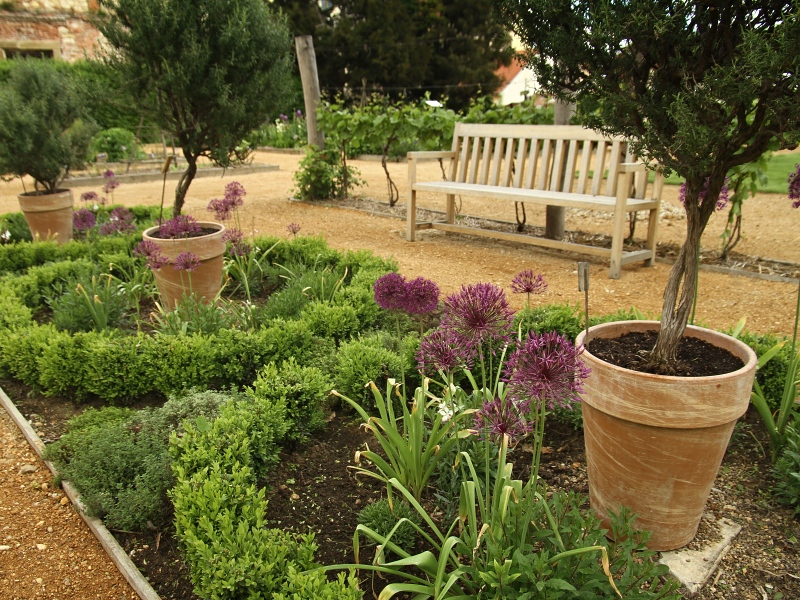
These ornamental patches present the decorative qualities of herbs in combination with ornamental perennials, grasses, and bulbous plants.
The ornamental patches in the center of the garden feature lavender, sage, savory, poppy, sweet william, santolina, thyme, stachys, field scabious, and hyssop.
Next to the orchard, you will also find a patch for sampling various herbs, such as wild rocket, nasturtium, rucola, purslane, sorrel, watercress, broccoli rabe, mizuna, mustard, edible chrysanthemum, buckwheat and amaranth.
Cherry Orchard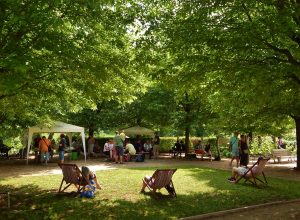
The remaining large section of the garden consists of a grassy area with an ornamental cherry orchard.
Nature Garden Without Borders
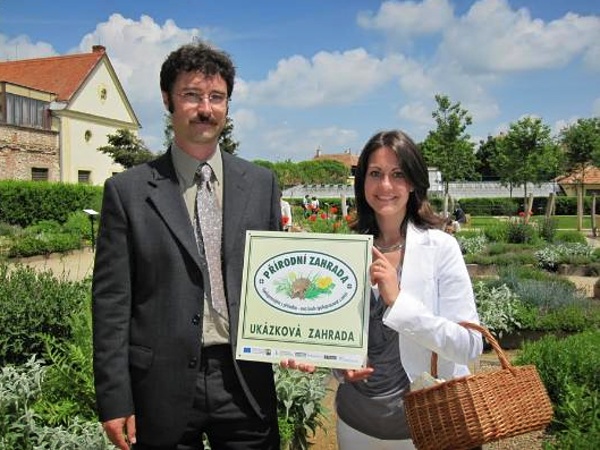
The Lu & Tiree Chmelar Herb Garden was recognized as the first model Nature Garden in the Czech Republic in 2010. We do not use any pesticides or herbicides. Instead, we utilize compost, mulch, and green manure fertilizer. The garden welcomes insects and birds. We have installed an insect hotel, a bumble-bee house, and a birdbath. We want our garden to be an undisturbed environmental paradise for plants and animals, as well as human visitors. Nature Garden is a program of Czech-Austrian cooperation. https://www.naturimgarten.at/
Our garden also offers …

Guided Tours and Special Programs
During a guided tour, you will learn about the history of the garden, the herb species, their properties and use.
We also offer Painting with the Bauer Brothers program for schools, summer camp groups, and small groups.
The program teaches children about the amazing story of two brothers, Franz and Ferdinand Bauer, Valtice-natives from the 18th century, who became respected botanic artists. The program also encourages children’s artistic expression and scientific observation as they capture images of the plants in the herb garden.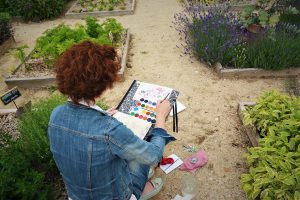
To book a guided tour or a special program, please contact us at bylinkovazahrada@gmail.com.
Children Activities
If you hear children laughing, they are probably playing gardener using little watering cans, enjoying the sandbox, or some of the garden games you can borrow in our gift shop.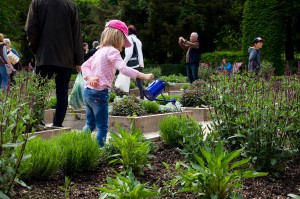
Gift Shop
Located in the former greenhouse directly in the garden, our gift shop offers a rich variety of plants, herbal teas, and other products, such as games, books, textiles, and souvenirs. You can also borrow picnic blankets and lounge chairs and board or garden games.




